iMore Verdict
The iPhone 14 Pro Max digs deeper and climbs higher than any iPhone before it, begging the question, where will Apple take things next? The new in-house A16 silicon that's exclusive to this generation's Pro and Pro Max is truly market-leading and the notch has morphed into the Dynamic Island. Does is subvert expectations? No. Is that a problem? Absolutely not.
Pros
- +
Class-leading performance from the A16 Bionic
- +
New camera system more versatile than ever
- +
Feature-rich new always-on display
Cons
- -
Size and bulk won't appeal to everyone
- -
Limited color options
- -
Price
You can always trust iMore.
This is iMore's Apple iPhone 14 Pro Max review. When the iPhone 14 Pro Max was first released back in September 2022, there was no doubt it was one of the best – not to mention biggest – handsets on the market.
Fast-forward to 2023 and Apple has since launched the iPhone 15, the iPhone 15 Pro and the iPhone 15 Pro Max. All three new handsets in the iPhone 15 line-up bring a whole host of upgrades on previous handsets.
So, if you're looking for the best iPhone money can buy, you'll need to take a look at what the iPhone 15 Pro and iPhone 15 Pro Max now offer instead. But if you're still considering the iPhone 14 Pro Max – and we don't blame you, it's still a fantastic choice – this review will help you decide.
The first thing you'll need to ask yourself if you're considering the iPhone 14 Pro Max is whether you need a very large display and a big battery. While the baseline iPhone 14 doesn't push the needle on all that much from its 2021 forerunner, the Pro line shifts up a gear in the performance department by standing apart from their vanilla siblings, with the company's latest A16 Bionic chipset.
The notch has finally freed itself from the mainland of the display's bezel to form the Dynamic Island – which is just one of a few big display advancements – and the rear cameras are bigger and more bombastic than ever, with an new 48MP primary sensor, backed up by something Apple calls the 'Photonic Engine'.
iPhone 14 Pro Max: Price and availability
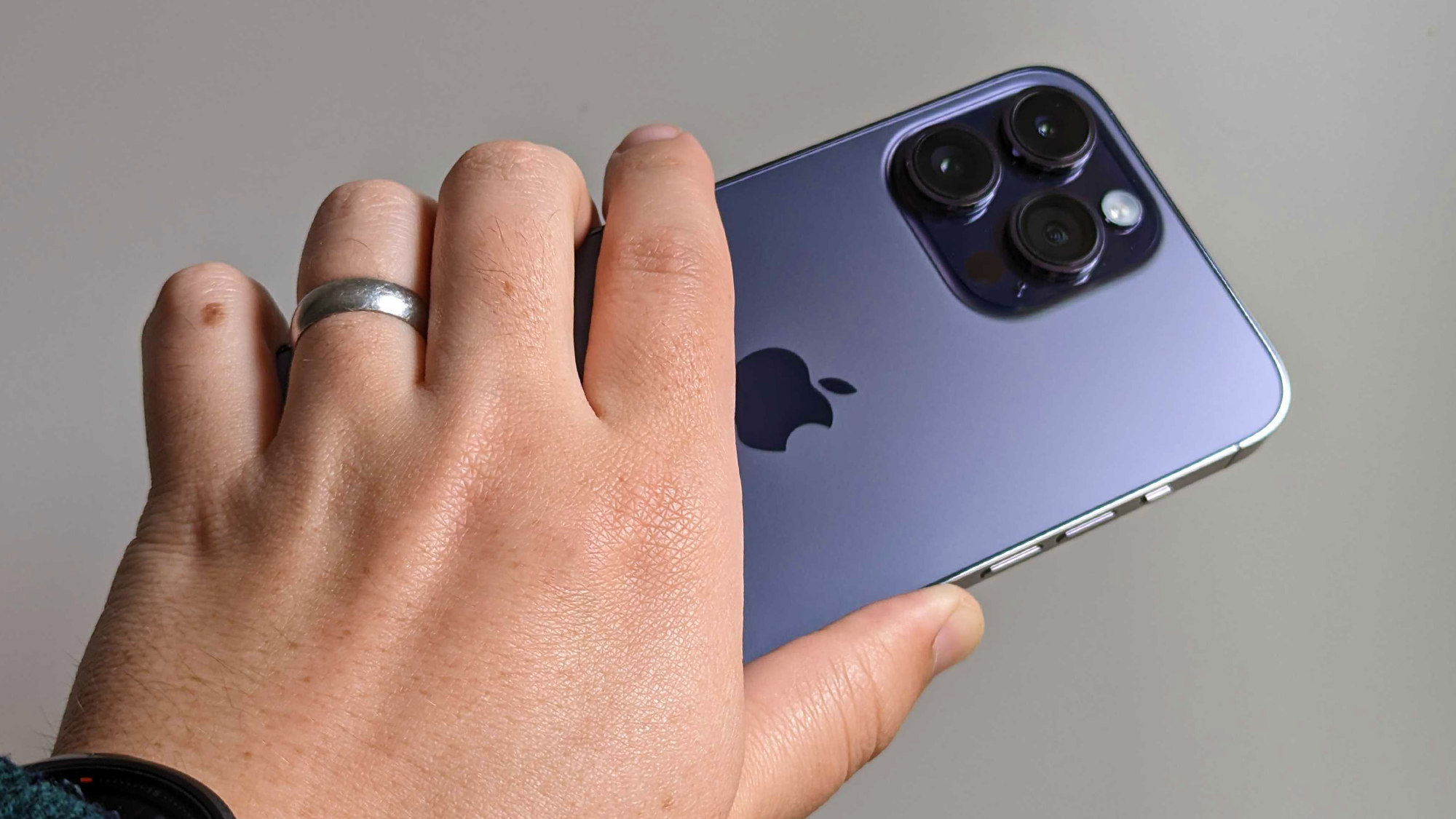
Both the iPhone 14 Pro and iPhone 14 Pro Max hit retail on Sept. 16. 2022, right alongside the standard iPhone 14. And while the iPhone 14 Plus featured at the same launch event as the standard 14 and its Pro-branded counterparts, it saw a delayed release of Oct. 7, 2022.
Colors and storage remain consistent across this generation's Pro line, with Deep Purple being the new signature color this year (pictured). Like the 14 Pro, the Pro Max is available in Space Black, Deep Purple, silver or gold and can be paired with 128GB, 256GB, 512GB or 1TB of storage.
iMore offers spot-on advice and guidance from our team of experts, with decades of Apple device experience to lean on. Learn more with iMore!
The 14 Pro Max starts at $1,099 / £1,199 / AU$1,899 for the 128GB model but full pricing is as follows:
| Storage | iPhone 14 Pro | iPhone 14 Pro Max |
| 128GB | $999 | $1,099 |
| 256GB | $1,099 | $1,199 |
| 512GB | $1,299 | $1,399 |
| 1TB | $1,499 | $1,599 |
Essentially, you pay a $100 premium to opt for the Pro Max over the 14 Pro at whichever storage capacity you land on.
Despite predictions of a price increase for the whole 14 series, Stateside, iPhone fans needn't have worried, as the – still admittedly high – asking price for either Pro variant remains unchanged from the previous years.
In markets further afield, however, such predictions were made real, with the iPhone 14 Pro Max starting a £150 more expensive than its predecessor (for the 128GB model), and similarly significant hikes at every storage configuration up the ladder, making the decision to buy outright that much harder this year for more potential customers worldwide.
iPhone 14 Pro Max: Design
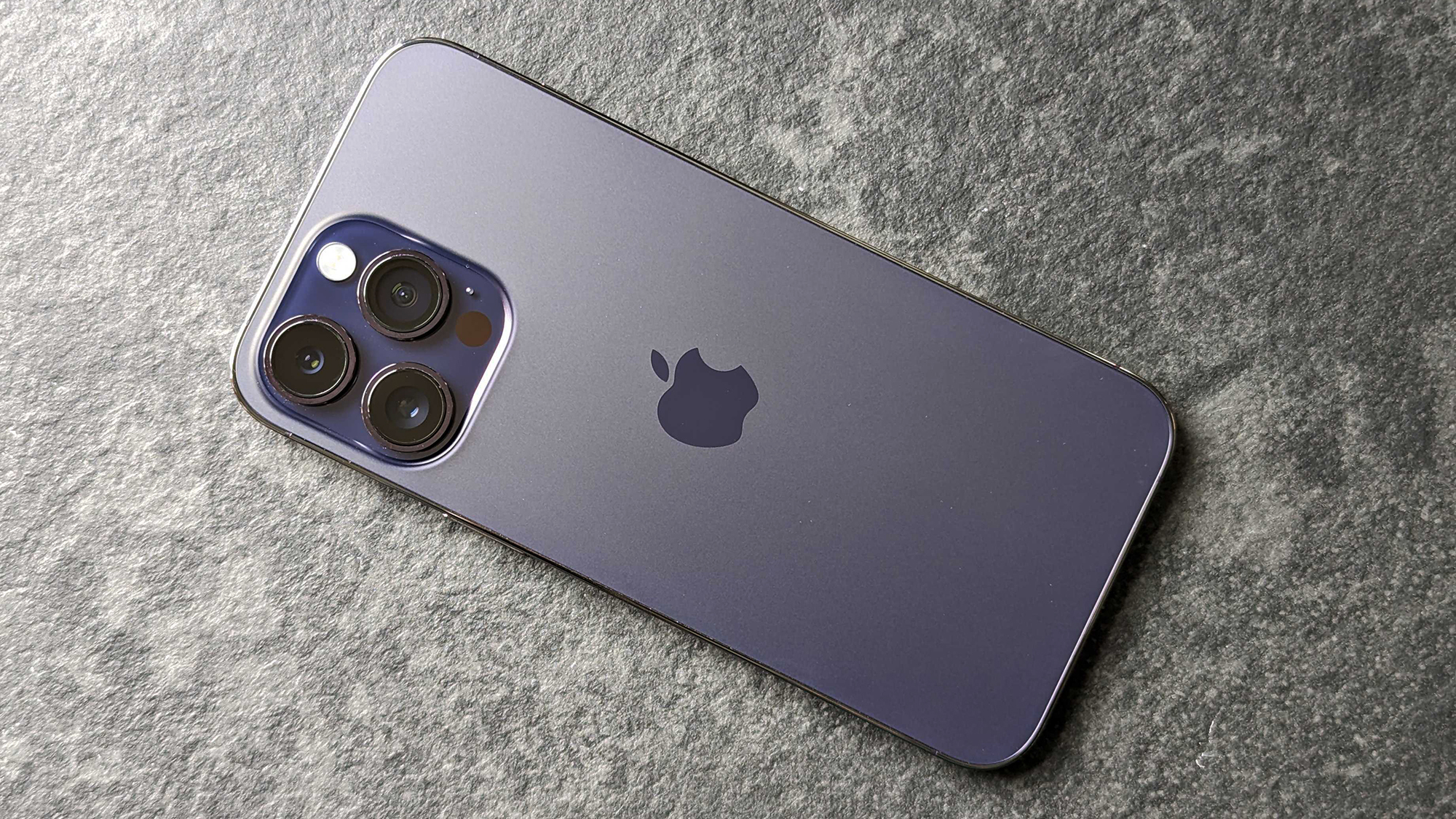
Provided you're not looking at the exclusive new Deep Purple colorway, there's little to help set the iPhone 14 Pro's design apart from its predecessor without proper scrutiny, save for the Dynamic Island (which I'll talk more about in a bit).
The same straight-sided design revived by the iPhone 12 series persists here and being a Pro model, the 14 Pro Max sports a polished stainless steel frame against a contrasting frosted glass back; the inverse of what you'll find on the standard iPhone 14 and 14 Plus, which feature polished glass backs and lightly-textured metal frames.
There aren't a lot of purple phones out there – at least ones worth buying – giving the Deep Purple 14 Pro Max tested here the ability to stand out from the crowd somewhat. I wouldn't have minded if Apple had pushed the saturation and brightness of this newest hue a little further before rolling it out of the factory though, as in some lighting conditions it's hard to tell apart from the Space Black model. However, when the light catches that glass back, especially around the (now even more prominent) camera bump, it can really 'glow'.
Assuming you're not a fan of fingerprints, as with the 12 Pro's and 13 Pro's polished frames, you're going to want to opt for one of the best iPhone 14 Pro Max cases out there, as smudges and smears are otherwise unavoidable.
As for durability and ergonomics, that straight-edged steel frame feels reassuringly rigid in the hand, not to mention the phone boasts both IP68 dust and water resistance, as well as Apple's own Ceramic Shield across the display.
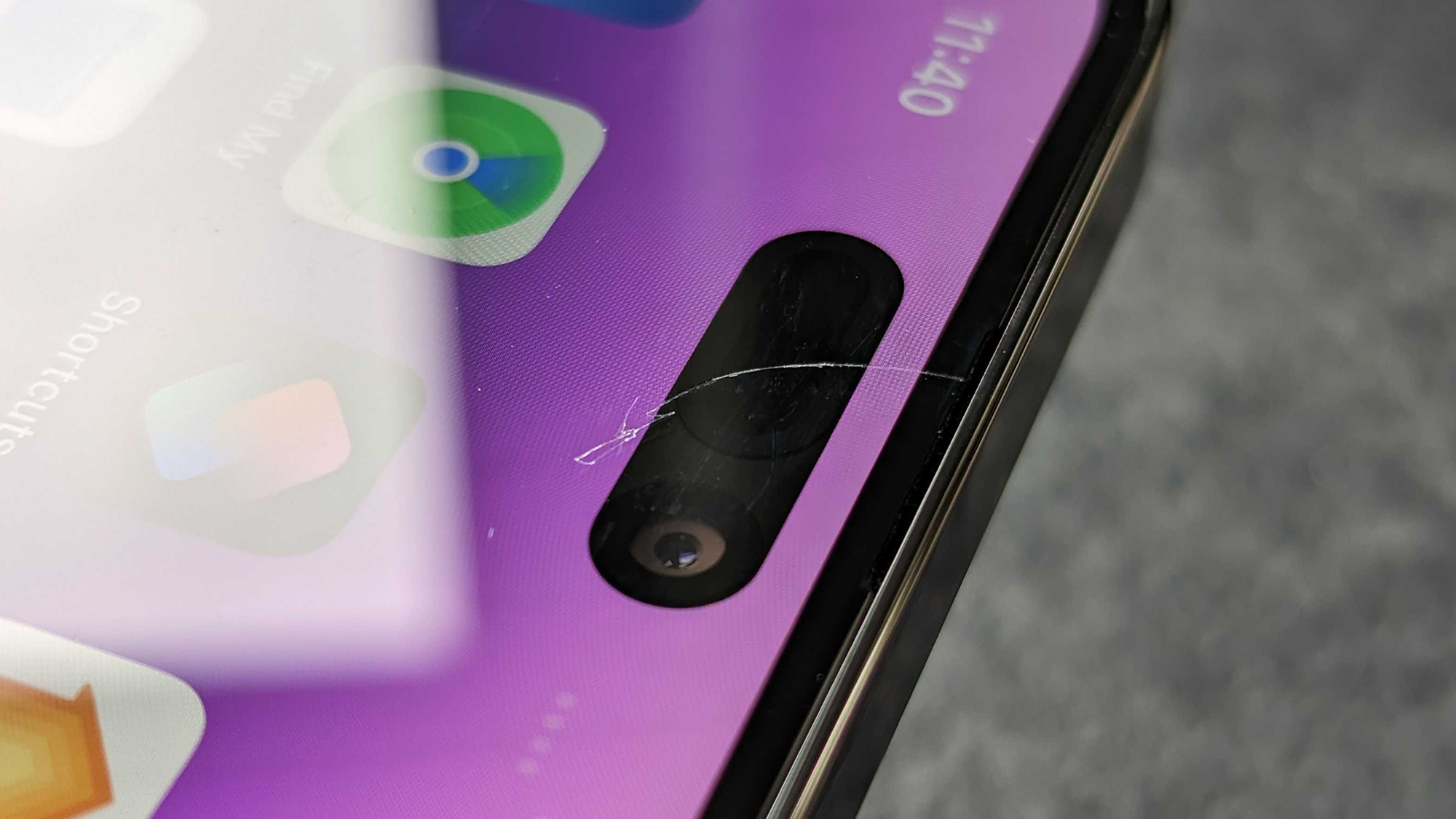
I say "boasts" but while I wasn't brave enough to drop test my 14 Pro Max, I did inadvertently subject the display to a scratch test, which was nothing more than placing the phone face down on a (recently-cleaned) flat surface, only to find that some imperceptible piece of grit had dragged a scar right across the Dynamic Island when I picked the phone up one day. This corroborates previous reports of lacklustre scratch resistance from Ceramic Shield that, in future, would push me to pick up a screen protector at the point of purchase (and, of course, we have a rundown of the best iPhone 14 Pro Max screen protectors, if you're worried about your display befalling the same fate too).
A note that only really applies to those that have never used a Pro Max iPhone before, it is one of the largest, bulkiest and heaviest handsets at its screen size, making one-handed use particularly cumbersome and precarious. It's advised to at least handle one in-person before laying down cash for this phone, unless you're fortunate to have larger hands than most.
Having skirted around it long enough, grab your shades, it's time to take a trip to Dynamic Island.
iPhone 14 Pro Max: Dynamic Island
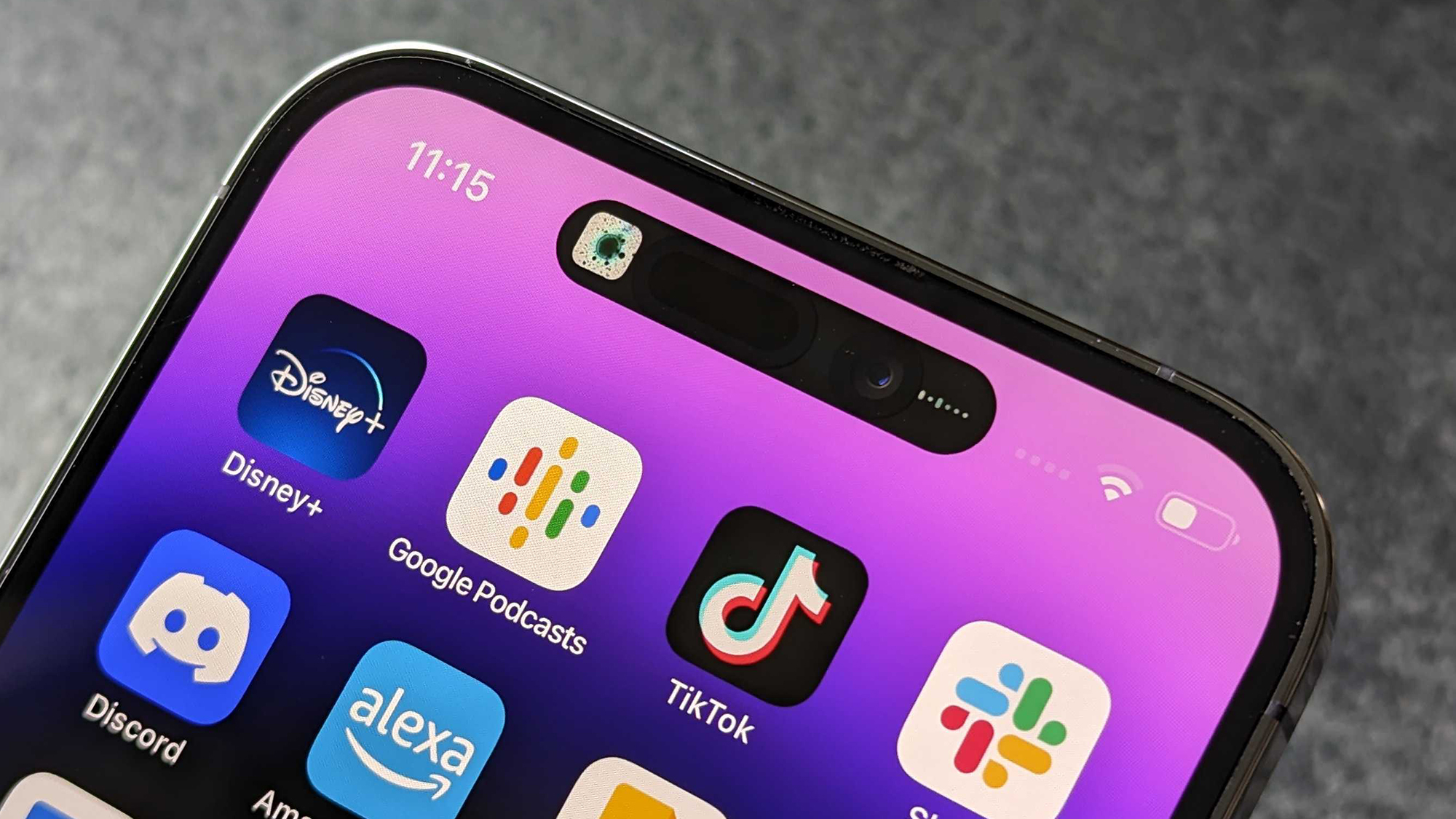
Having reviewed a mountain of smartphones from other manufacturers who'd already made the jump to a punch-hole front-facing camera, I didn't expect the 14 Pro series' move away from the notch to be as revelatory as it might seem to those who've only ever been on team iPhone.
Apple being Apple though, the company waited until it was comfortable in building on the concept in such away that bidding the notch farewell offered users genuine new benefits.
Could the added value that the Dynamic Island offers have been achieved on the previous iPhone's notch? Possibly, but the implementation wouldn't have been as elegant (or on-brand).
As silly as it may seem at first, Apple's clearly put a lot of work into the interplay between hardware and software that is the Dynamic Island. Yes, at certain angles you can see the individual Face ID TrueDepth and front-facing camera sensors, but the intention is that all you ever really notice is a black pill-shaped element that can shrink or grow as needed to convey additional information or provide additional control over select features.
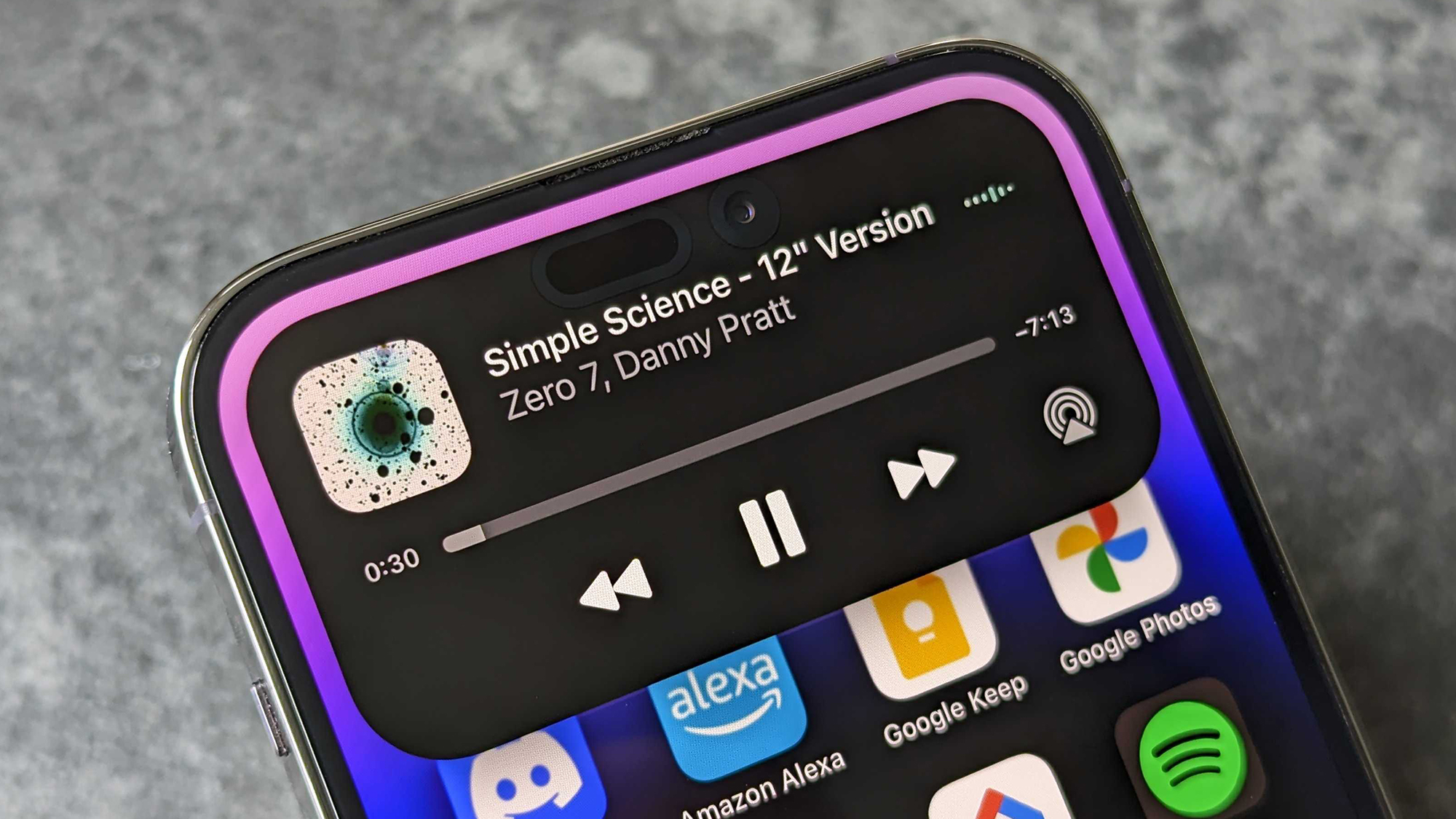

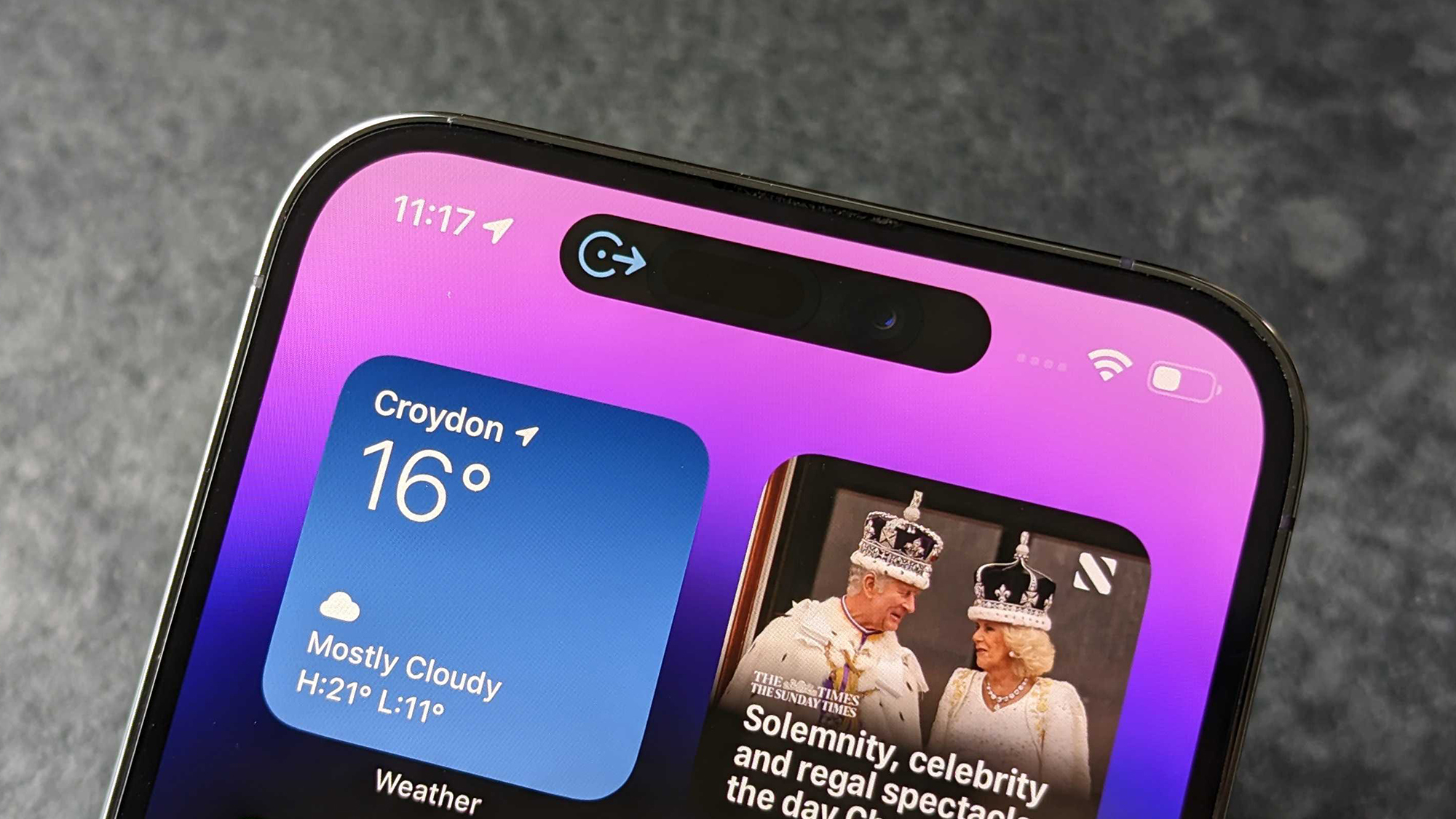
There's a learning curve, sure, but it's small and as user interaction goes, the Island is both elegant and playful.
The only thing I refute is any claim that states it's less-intrusive than the notch. Sure, it's a smaller overall element – now truly separated from the bezel by a channel of pixels – but it actually sits lower and more towards the center of the phone's display than the bottom edge of the notch ever did.
There are lots of passive animations that the Dynamic Island can serve up: a padlock when the phone is locked, a spinning ring when Face ID is making an assessment, an audio equalizer and the tiniest album art thumbnail on either side during music playback and there are so many more examples I've both encountered and am undoubtedly yet to encounter.
There are more active experiences too: incoming calls include key info as well as accept or decline buttons, any active timers are reflected with an ever-present countdown and a long-press turns the pill-shape into a full rounded rectangle about the size of a notification, with more information and added controls (depending on the experience).
You can also tap the Dynamic Island while it's active to open the relevant app in full and if it splits apart – having been engaged by two compatible apps simultaneously (like Spotify and a timer) – you can tap on either element of the now-two-element pill to jump to either experience directly.
There's a learning curve, sure, but it's small and as user interaction goes, the Island is both elegant and playful.
iPhone 14 Pro Max: Display
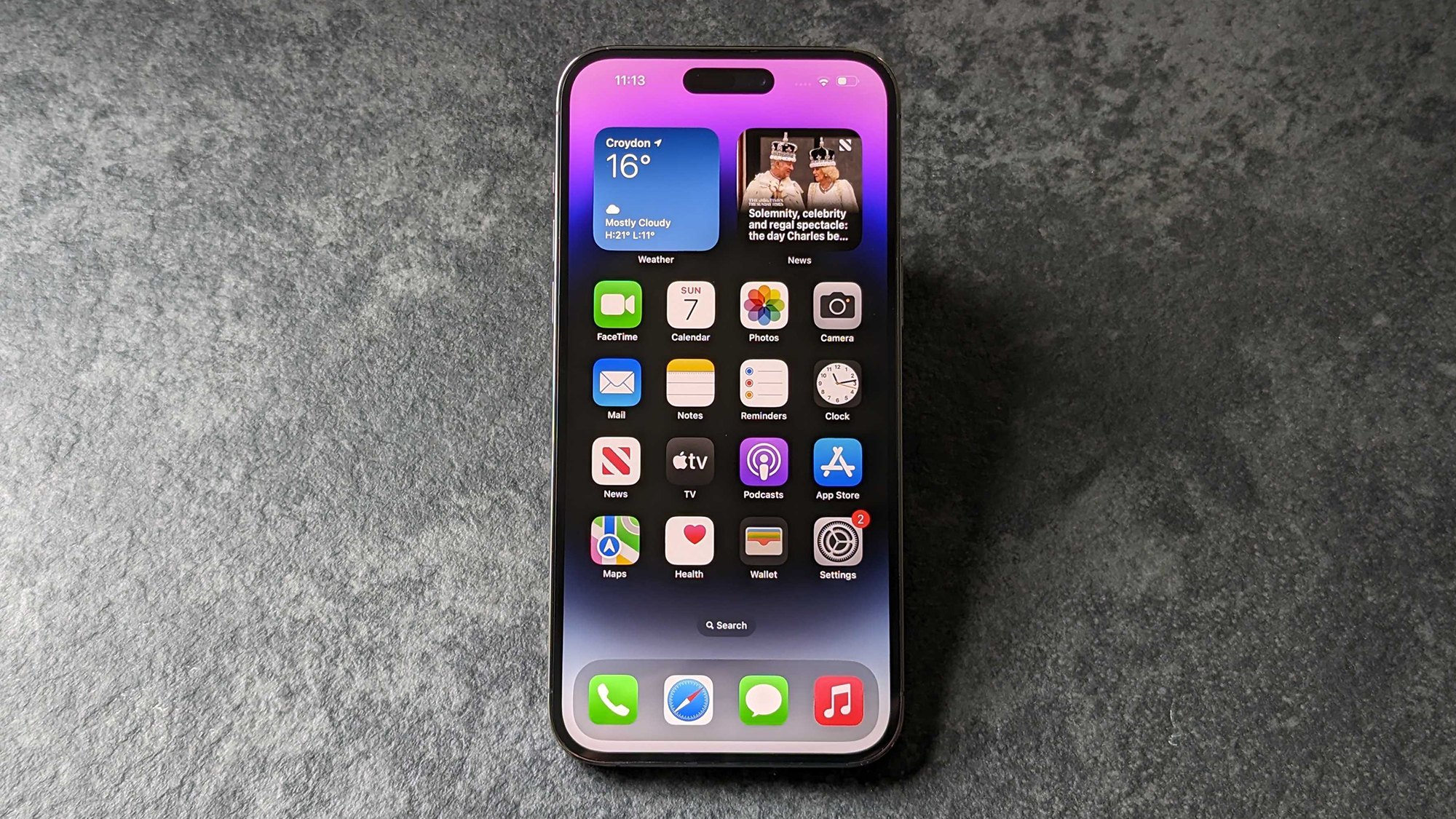
While Apple granted the 14 Pro Max the same size and resolution display as previously, this generation now integrates an always-on display (AOD) mode.
Across both the 14 Pro and 14 Pro Max, the screen still serves up great OLED visuals with a super-smooth 120Hz peak refresh rate at its disposal, but the panels at work can also step right down to 1Hz for minimal power consumption while still being able to display timely information.
Much like Apple's decision to intentionally sleep on punch-hole front-facing cameras until now, it's take on the always-on display is significantly different to what you'll find in the Android camp; for one, your wallpaper remains visible.
Most other phones boasting an always-on display serve up a near all-black screen, with some small elements like a clock and a few notifications icons to keep you informed of 'something', whereas Apple's version of the AOD doesn't look that dissimilar from your normal lock screen. You can still read notifications as they come in and the clock remains visible, but so does the entire wallpaper, albeit darker and dimmer until you tap the screen to wake it up.
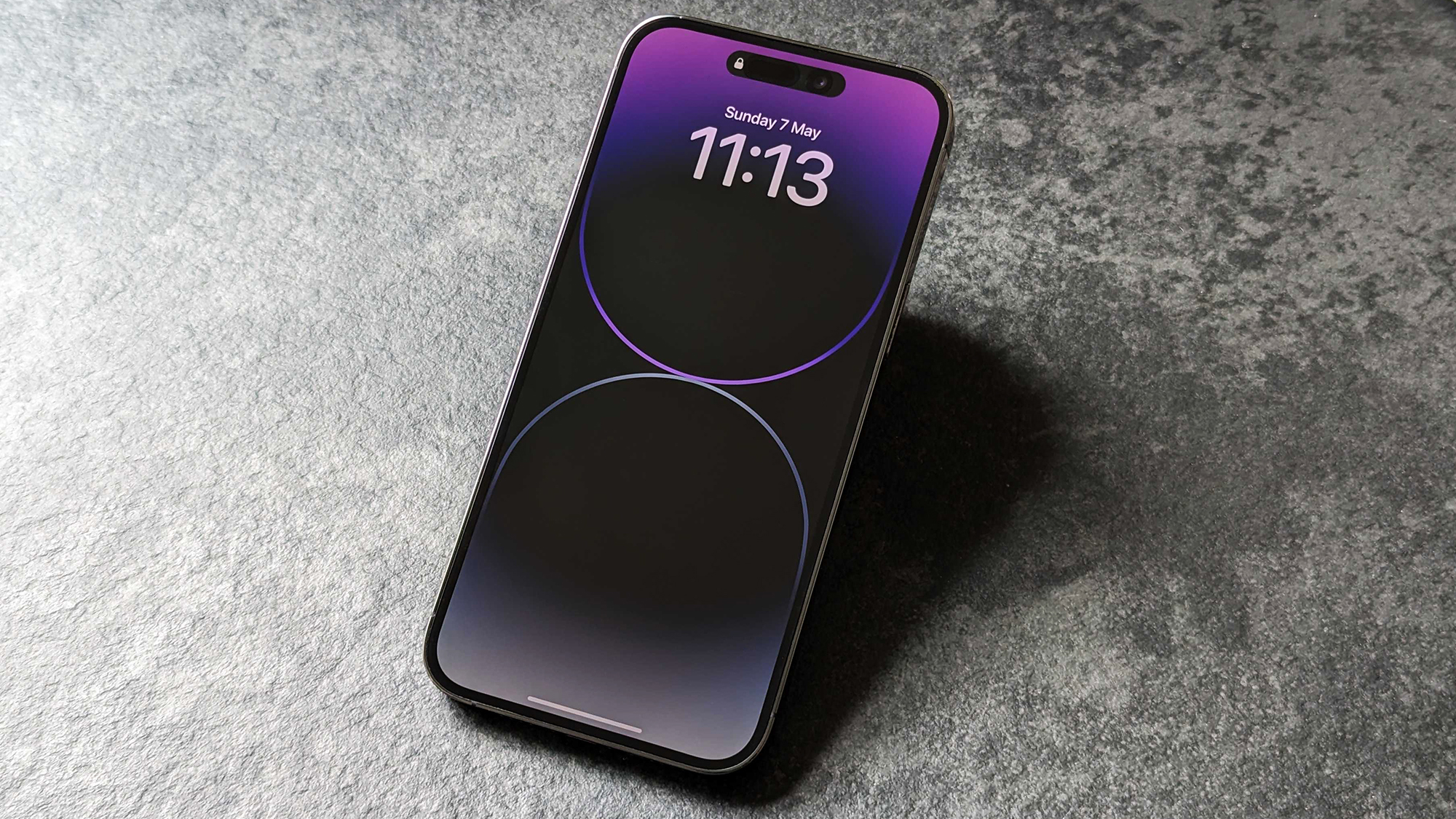
If you leave the 14 Pro Max alone long enough, and it doesn't detect any significant presence, even the AOD will turn off to conserve even more power but, in practice, this makes for one of the most useable and best-looking AODs on any phone currently out there (not a sentiment everyone agrees with, it seems).
You will have to get used to thinking your phone hasn't just lit up with a fresh notification or you didn't forget to lock it in the first place, but once you can quickly distinguish between your lock screen and the AOD, it's a great new boon, currently unique to the 14 Pro and Pro Max in the iPhone family.
If you'd rather not use the AOD, you can turn it off completely if you want or at least schedule it to disengage while you rest as part of a Sleep Focus. Meanwhile the rest of the display experience is par the course; generally excellent color, contrast and viewing angles, with the added benefit of new peak brightness that was class-leading at launch (1,000nits typical max brightness – the same as the 13 Pro Max, 1,600nits peak HDR brightness – up from 1,200 on the 13 Pro Max, and 2,000nits peak outdoor brightness, according to Apple).
iPhone 14 Pro Max: Software and features
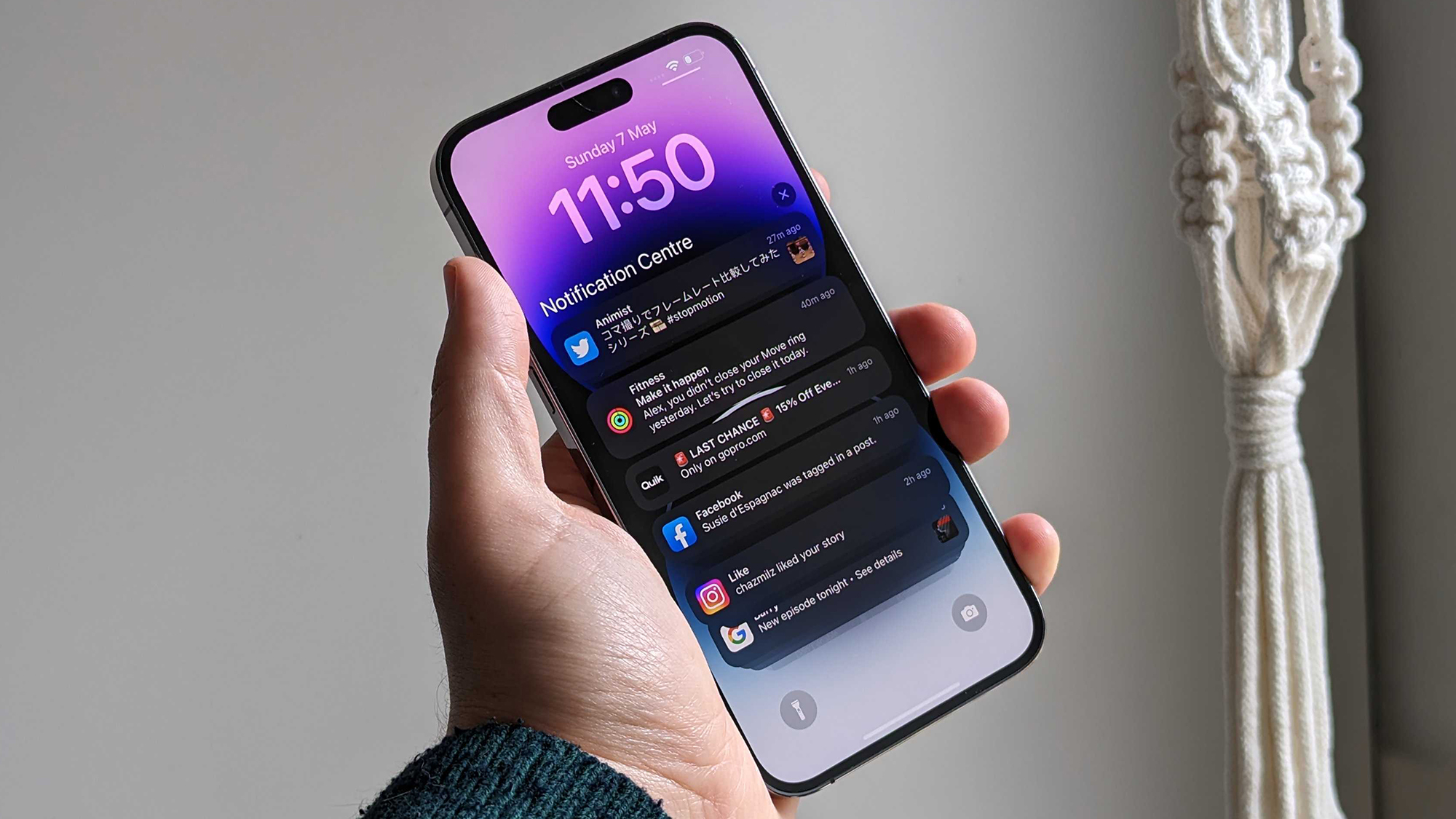
Expect the latest iOS 16 out the box, which builds on the familiar user experience offered by the last few releases of Apple's smartphone operating system, with some noteworthy enhancements.
That great new display makes the most of the release's richer, more customizable lock screen experience (which even allows for depth-mapped photos to appear both behind and in-front of elements like the clock), new clock styles, the ability to long-press and drag images between apps and text fields, enhanced focus modes with allowances for the phone's AOD, message editing after sending, multi-segment trips in maps (with the ability to add stops via Siri) and a host more additions to boot.
iPhone 14 Pro Max: Emergency SOS and Crash Detection
At launch, two powerful new (but hopefully seldom used) additions to this generation's repertoire are Emergency SOS via satellite and Crash Detection.
Initially available exclusively in the U.S. and Canada in November 2022, before expanding to France, Germany, the U.K. and Ireland the following month, the iPhone 14 series' biggest unseen upgrade centers around safety.
Emergency SOS via satellite lets you send a series of messages, designed to help gather key information about your emergency and sending it onto the emergency services – even if you're out in the wilderness, away from cell towers and without cellular or WiFi connectivity. This new feature is made possible through new investment Apple has placed in a satellite connectivity operator, called Globalstar.
As with accessing the power menu, you can initiate the feature by holding the side button and volume up keys and then swiping on the subsequent emergency SOS slider (there's a demo mode in the settings menu if you want to see how the feature operates in more detail without actually using it).
For those wondering why it only lets you send a text message and not a call, satellite connectivity isn't built for lots of data – as would be the case with conventional messaging and calls – and even requires that you actually aim your iPhone at the nearest satellite to ensure your messages go through (something the iPhone guides you through in the moment). For best performance, it's stated that you should be outside, with a clear view of the sky, unobstructed by trees and the like, if possible.
Another iPhone 14-series exclusive addition (for the time being) is Crash Detection, which uses combined data from your phone's gyroscope, accelerometer, GPS, barometer, microphone and an 'advanced motion algorithm' to judge whether you've actually been in a collision. If it does detect a crash, you'll be given the option to swipe to call the emergency services (or dismiss the prompt) and if there's no user input detected after approximately ten seconds, an addition ten-second countdown will commence, after which the emergency services will be automatically contacted.
In both cases, these are the kinds of features that it's great to have at your fingertips but you hopefully won't ever have to use, although the former does also grant the iPhone the edge for avid hikers and the like, looking for the best phone for their lifestyle.
iPhone 14 Pro Max: eSIM

We've heard talk of portless iPhones for a few years now and while we bid farewell to the headphone jack back in 2016 – with the iPhone 7 series – in the U.S. at least, the iPhone 14 family – including the 14 Pro Max – is also now devoid of a physical SIM slot.
The main criticizm to Apple going all-in on eSIM is that it makes swapping your SIM between devices almost impossible without carrier involvement, at least right now. While the average user won't need to change SIM cards all that often, it does pose a problem for travellers looking to pop in a local SIM while they're abroad.
As I reviewed a global iPhone 14 Pro Max, mine still came complete with the physical SIM slot, making moving over to Apple's latest and greatest pain-free, however, Christine Chan – who wrote iMore's iPhone 14 Pro review – picked her device up from Apple in the U.S. with T-Mobile as her carrier of choice.
In her review, Christine detailed the setup experience as follows, "eSIM activation was very simple and straightforward. I just had to follow the on-screen instructions – since I chose my carrier when purchasing, the device was already provisioned for T-Mobile. I was worried at first that there may be issues connecting to T-Mobile’s network, but it all went down without a hitch. Within minutes, my cellular service was activated and I could make and receive calls as well as send messages and get data."
Although an anecdotally painless experience, it doesn't detract from the challenges users committing to the current eSIM ecosystem face; mainly its reliance on pre-emptive carrier provisioning in order to facilitate a seamless setup experience for end-users. But if any company can nudge the entire mobile industry to collectively improve upon an established technology like eSIM – in the pursuit of a more seamless user experience – it's Apple, and the SIM-tray-free iPhone 14 series in the U.S. looks to be the company's equivalent of a call to action.
As such, however you feel about eSIM right now, I have a sneaking suspicion we're only going to start seeing more and more phone makers serving smartphones devoid of a SIM tray – may it rest in peace.
iPhone 14 Pro Max: Performance

As mentioned at the top of this review, in a cruel twist of fate to prospective iPhone 14 and 14 Plus buyers, only this generation's Pro models receive a truly new SoC (system-on-chip) from Apple; in the latest A16 Bionic (the non-Pro models arrive with the five-core GPU-laden A15 Bionic, previously exclusive to the iPhone 13 Pro and 13 Pro Max).
Apple's phones always offer up more performance headroom than the majority of their Android competitors and the A16 helps place the 14 Pro Max at the top of the pile, when comparing artificial compute tests like Geekbench 6. Understandably, real-world performance is just as sure-footed, and with the 13 Pro Max still not showing any signs of slowdown a year on from release, the 14 Pro Max makes for one of the most sensible buys for those after a device with the ability to deliver well beyond the average two-year contract.
The A16 Bionic's six-core CPU (comprised of two performance cores and four efficiency cores), five-core GPU and a 16-core Neural Engine ensure that the 14 Pro Max will feel like a fast and capable upgrade from almost any phone more than a year old, plus 50% more memory bandwidth, supports gaming experiences with aplomb, while the Neural Engine is tailor-made to cut through image processing tasks carried out by the new 'Photonic Engine' and anything else that 's best-served by ML-based (machine learning) processing.
iPhone 14 Pro Max: Cameras
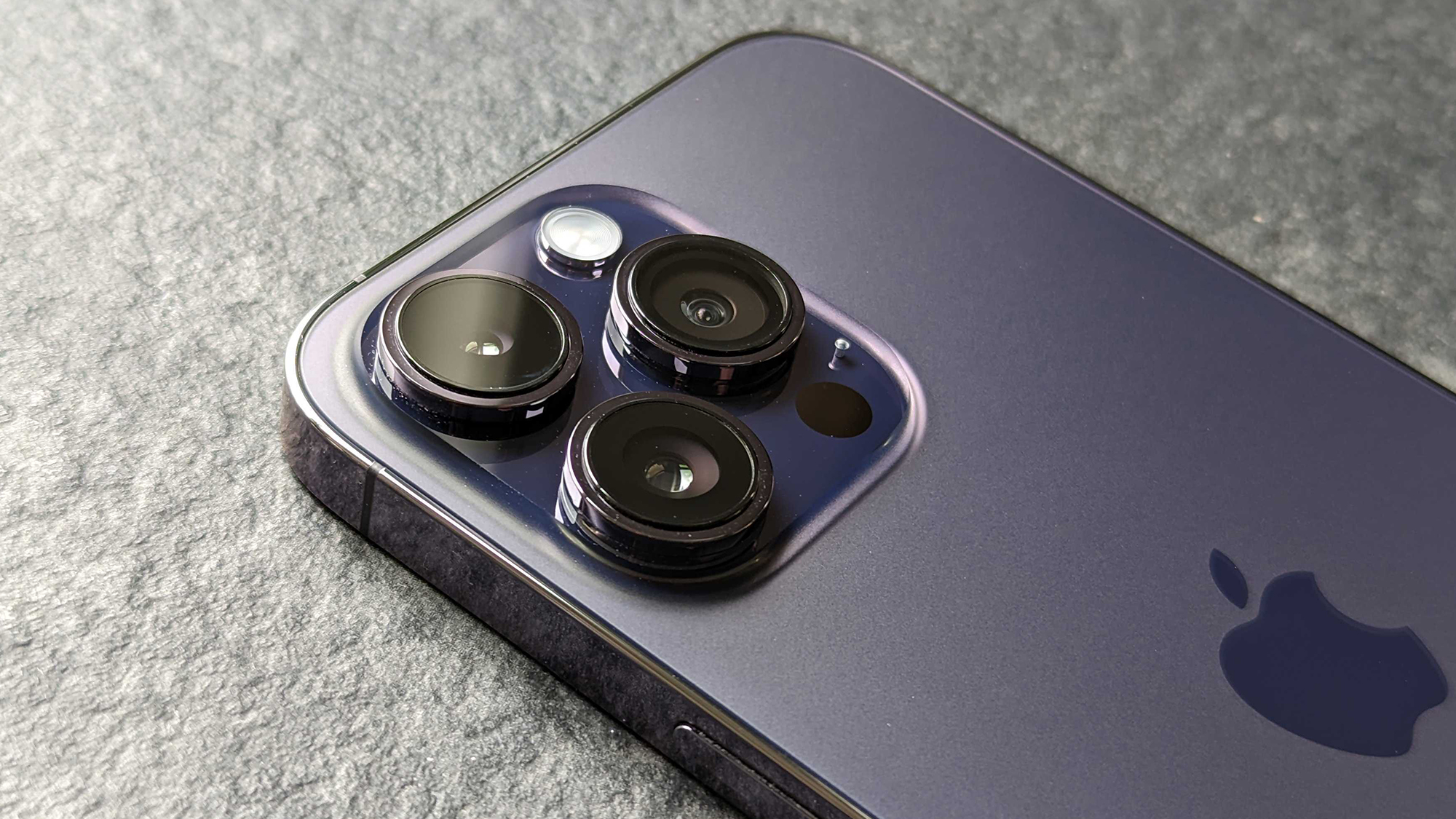
For the first time since the iPhone 6S line, Apple has upped the resolution of the its phone's main camera; with a new 48MP sensor not just offering more raw pixels to play with, but fundamentally changing how the iPhone processes images and what functionality is on offer.
As well as that main sensor's new revised wider 24mm lens (down from 26mm, previously), sits a 12-megapixel ultra-wide and 12-megapixel telephoto sensor with 3x optical magnification – as before – along with quad-pixel-binning (from four down to one) for resultant 12MP stills, not to mention lossless 2x zoom – through smart cropping on the new main sensor – when needed.
Shooting in ProRAW lets you capture stills at the main sensor's native 48MP resolution – if desired, but unless you plan to carry out some heavy-duty editing after capture, the resultant file size means it's a feature best used sparingly. The same is true when capturing (admittedly impressive-looking) 4K ProRes video too, which consumes storage at a comparatively alarming rate – one minute of footage can fill up to 6GB of space – which is why, like the previous Pros – the 128GB iPhone 14 Pro and 14 Pro Max only allow for ProRes capture at up to Full HD resolution.
Storage aside, handling these raw image and video files and working with them on-device is, thankfully, mercifully pain-free, as the A16 outputs near-instantaneous rendering when working with such video files, for example.









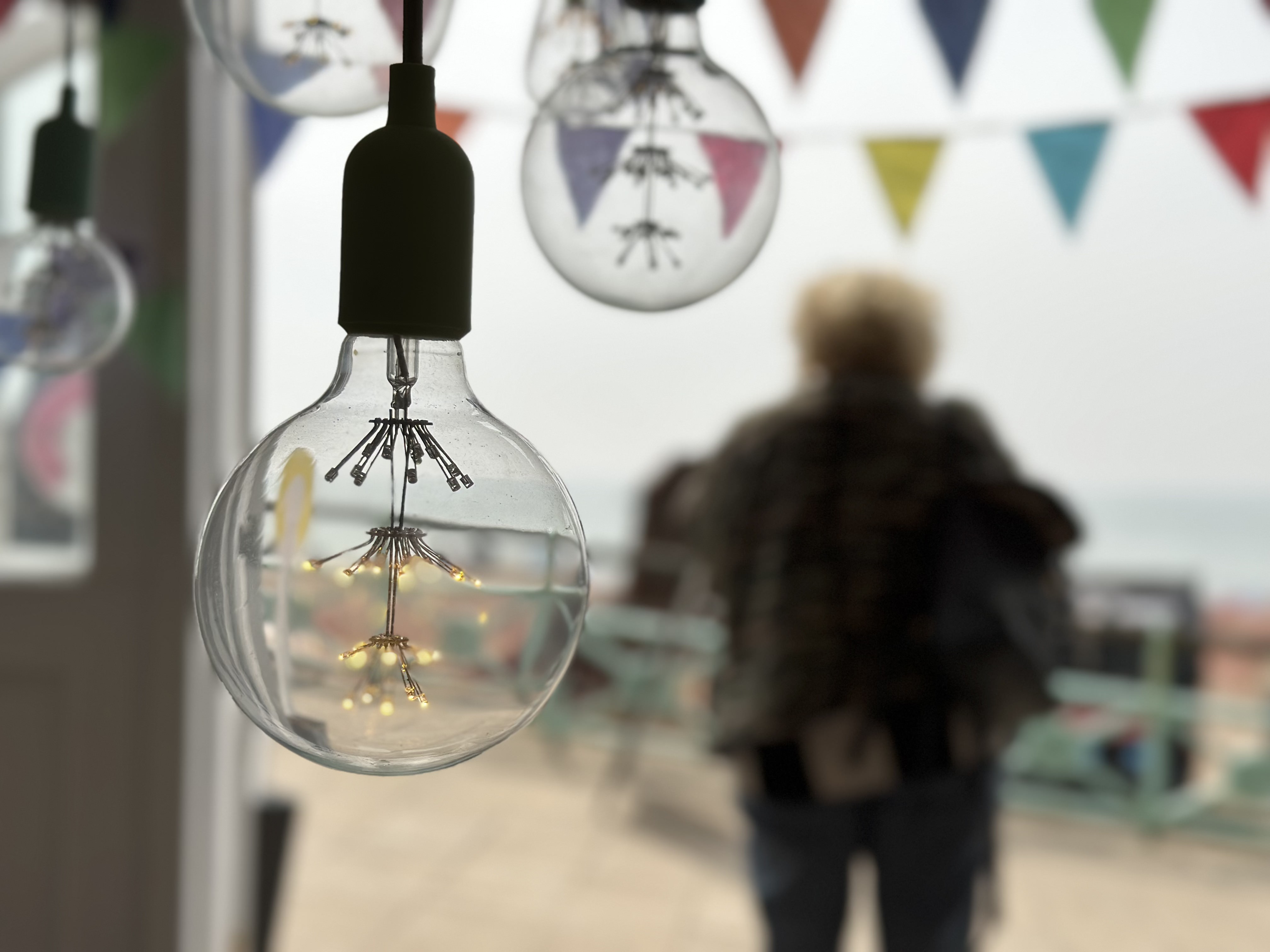












Action Mode (allows) for gimbal-free super-stable video that should have GoPro sweating.
If you're coming from the 13 Pro Max – despite the promise of so many new technologies – in day-to-day use you might not immediately spot the differences in camera performance. Generally, however, you can expect marginally wider dynamic range, crisper details and slightly different color science that pushes color temperature more in one direction or the other, depending on the scenario, compared to shots from its predecessor.
Such differences are thanks, in part, to the new Photonic Engine, which integrates Apple's Deep Fusion tech earlier on in the processing pipeline – on uncompressed stills – alongside working with more raw image data, thanks to the move to that larger and more pixel-dense main camera sensor.
Year-on-year, the 12MP ultra-wide delivers faster and more accurate focusing, while the ability to squeeze four lossless focal ranges out of only three sensors is a very neat trick that ups this Pro Max's camera versatility credentials beyond its predecessors too, while also narrowing the gap in quality telephoto photography compared to noteworthy generational rivals; like the Google Pixel 7 Pro and Samsung Galaxy S23 Ultra. That said, a 15x maximum zoom range means it still falls short for those with a penchant for tele snaps in particular.
While the 14 Pro Max ensures that Apple retains its dominion over smartphone videography (which now includes Action Mode, for gimbal-free super-stable video that should have GoPro sweating), the 12MP TrueDepth camera also reminds users of the company's excellence when it comes to taking selfies.
For the first time ever, the iPhone's front-facer finally gains autofocus, not to mention a wider ƒ/1.9 aperture, which collectively help with scenarios like low-light shooting and groups shots. Portrait mode selfies look better than ever too, with Apple's best edge detection and most natural-looking bokeh yet.
iPhone 14 Pro Max: Battery life
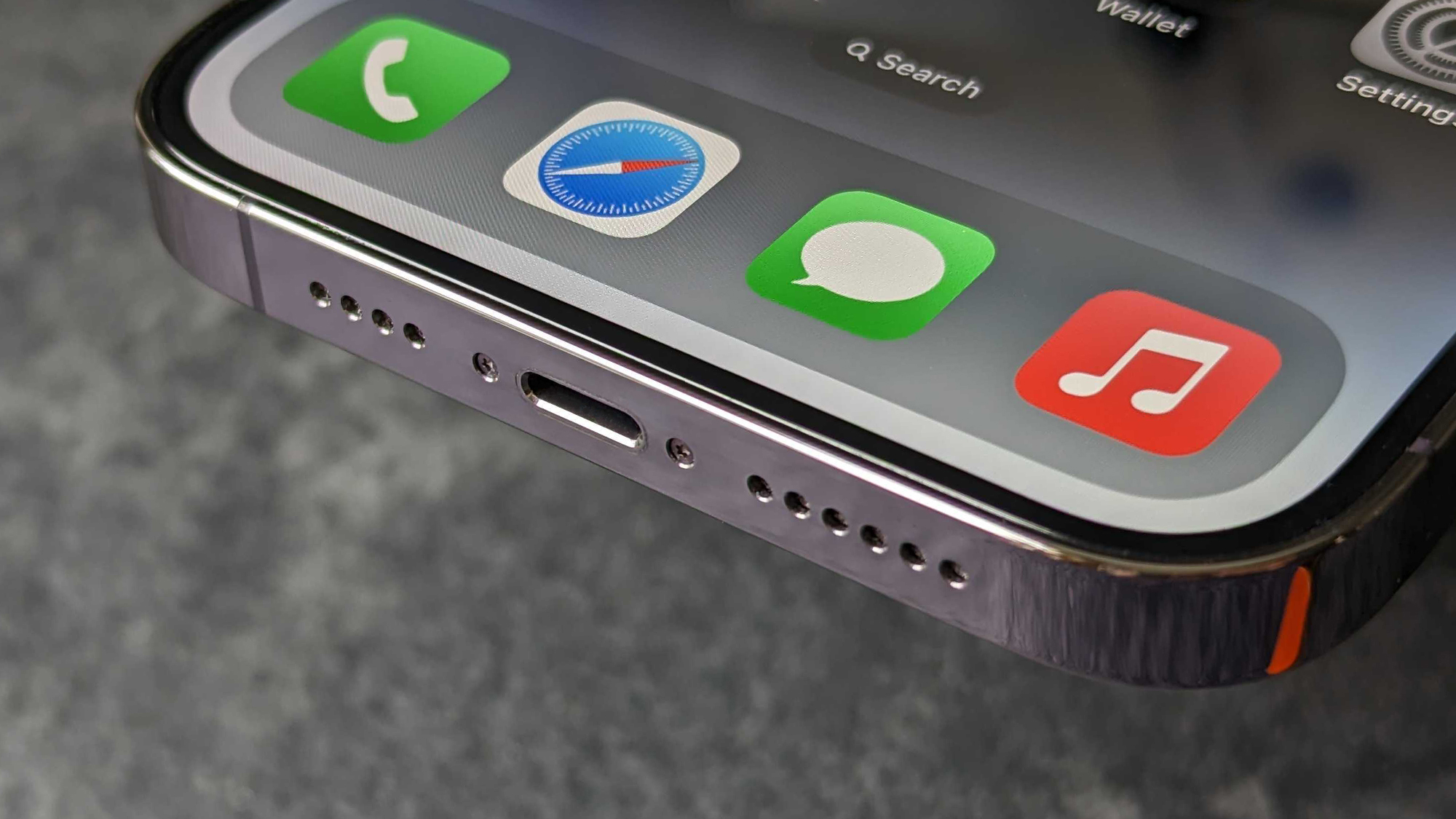
The beauty of practically every Pro Max is that they offer excellent battery life, which is just as true on this latest entry as it was with the 11 Pro Max, three generations prior.
A mixed day of use – including social media, web browsing, gaming, streaming video and camera usage – isn't enough to stump the 14 Pro Max, not by a long shot. 7.5 hours of screen-on time per charge is well towards the top end of the current best and brightest phones on the market too, equating to up to two days of use per charge, for those willing to be a little more considered with their usage.
The battery is fractionally smaller than the one found inside the last Pro Max in terms of mAh and yet the improved efficiency of the A16 Bionic clearly wins out, even with the addition of the helpful new AOD.
As for recharging, while you won't find a power adapter in-box, those already in possession of a compatible Apple charger should be able to fast-charge the 14 Pro Max to over 50% in 30 minutes, which is exactly what my testing confirmed.
Using the 30W Apple USB-C adapter that came with my M1 MacBook Air, the iPhone 14 Pro Max reached 28% charge in 15 minutes and 55% charge in 30 minutes. 100% took a disproportionately-long 1 hour 52 minutes but the last 15 to 20 minutes solely spent reaching that magic 100%, meaning the 14 Pro Max is really ready to go for a full day's use much sooner than that.
The arrival of the 14 series marks the third-generation of MagSafe for iPhone-compliant accessories, meaning the 14 Pro Max can leverage a rich ecosystem of compatible cases, stands, chargers and other additions that have cropped up over the last three years.
Like wired charging speeds, peak wireless charging (at 15W) still sits behind the curve, especially when you look at what companies like Xiaomi and Oppo offer, but the versatility and availability of first and third-party MagSafe products stands unmatched.
iPhone 14 Pro Max: Competition

As already hinted at throughout this review, it should come as no surprise that the biggest and most powerful iPhone's most like-minded rival is... Samsung's biggest and most powerful Galaxy: the Samsung Galaxy S23 Ultra.
Ceramic Shield squares off against Gorilla Glass Victus 2 (which boasts superior scratch-resistance that would have proved welcome, based on my time with the 14 Pro Max), the Ultra's display is sharper and supports stylus input – enabled by the phone's integrated S Pen – while I think we're still a ways off Apple Pencil support on iPhone. The 14 Pro Max's display is brighter overall, however.
Both phones also sport a ceiling of 1TB of storage, with the Samsung boasting a larger 5,000mAh battery (resulting in greater longevity) and faster peak charging, at 45W. There's also the camera systems to consider.
While Apple moved from 12MP to 48MP for the main Pro iPhone's camera this generation, Samsung traded an already-sizeable 108MP sensor for a new 200MP unit; not to mention the S23 Ultra also boasts two telephoto lenses (3x and 10x), as well as a maximum 100x zoom range. As such, camera versatility clearly goes to the Galaxy, however, actual image quality is far more comparable, where personal preference may be the deciding factor on this front: Apple's more natural imagery or Samsung's more striking shots.
In day to day use, you'll likely find both phones pack in more than enough power for whatever you throw at them, but numbers place the A16 Bionic ahead of the Galaxy's tailored Qualcomm-made Snapdragon 8 Gen 2 SoC, which likely renders the iPhone the better long-term buy.
iOS also serves up more apps that can better leverage the power of the A16 Bionic, compared to equivalent Android experiences available to the S23 Ultra, by way of apps like iMovie and the like.
iPhone 14 Pro Max: Should you buy it?
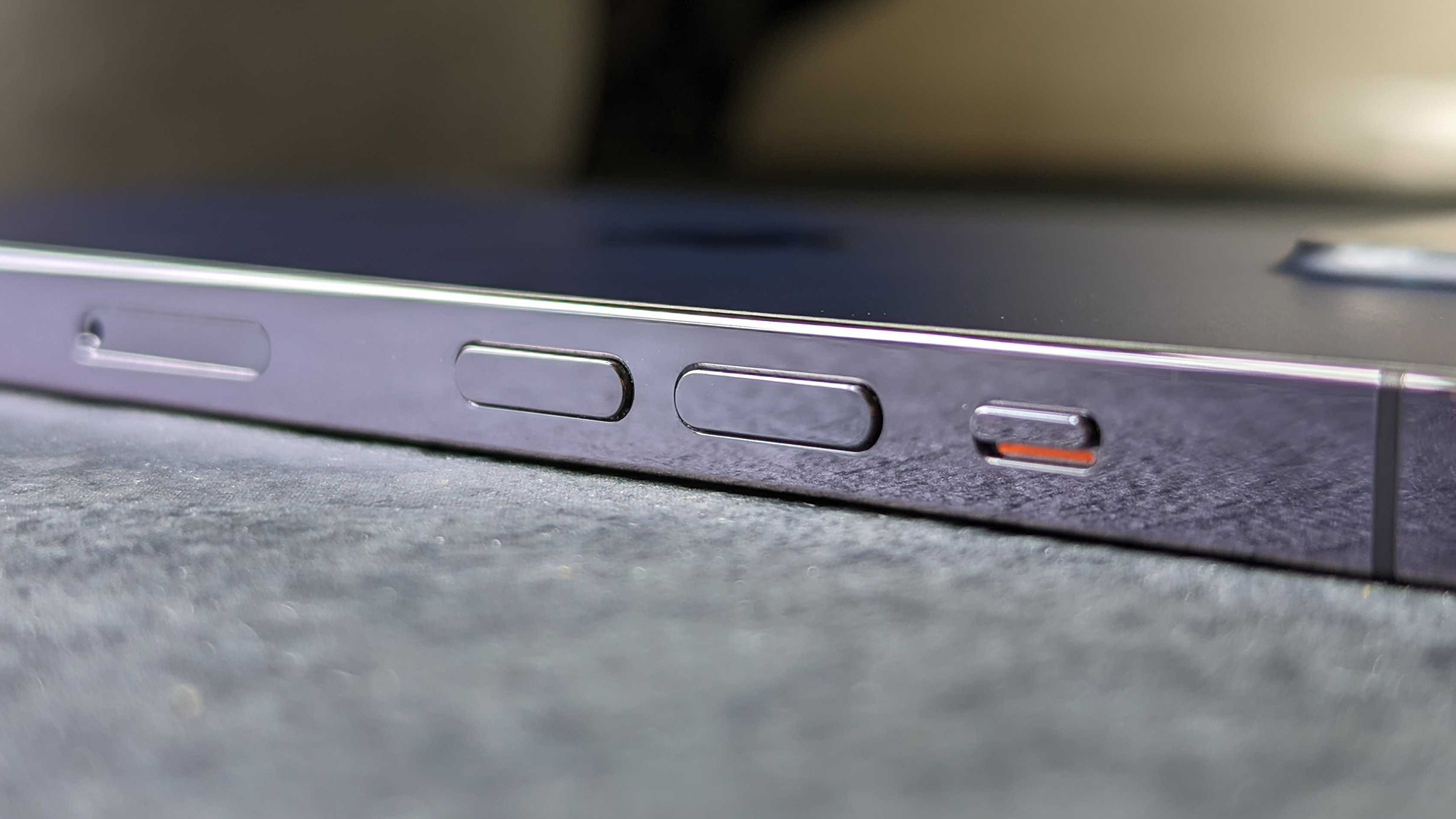
Buy the iPhone 14 Pro Max if...
You want one of the biggest and best iPhones
The iPhone 14 Pro Max packs in the most powerful mobile chipset on the market, the richest always-on display out there, stellar battery life, more versatile camera performance than any iPhone before it and a great software experience with superb long-term support. Of course this can now be beaten by the iPhone 15 Pro Max, but the 14 version is still a worthy handset – especially if you're looking for a big phone.
You want an iPhone with a killer camera
The 14 Pro Max marks a pretty seismic shift in iPhone camera hardware and yet the transition feels painless and welcome. The new 48MP main sensor enables lossless zoom at more focal ranges than previously, higher quality ProRAW stills and improved image stability with the new Action Mode, not to mention it retains a confidence and consistency in its images that few other phones can match.
You’ve been wanting an iPhone with an AOD
Apple being Apple, despite the technology being available for years on the Android side of the fence, it's taken the company all that time to land on an implementation it was happy rolling out to users, but I'd argue it was worth the wait.
The iPhone 14 Pro Max's big AOD conveys more glanceable information than most alternatives, while also letting you still enjoy your chosen wallpaper.
Don't buy the iPhone 14 Pro Max if...
If it's beyond your means
Sure, the iPhone 14 Pro Max is a formidable phone that will last most users three years or more, without feeling like it's falling behind the curve, but such performance and longevity unfortunately comes with a high price.
If you have to work especially hard to make the payments to get the latest Pro Max in your pocket, maybe consider a capable alternative, like the previous 13 Pro Max or even a Google Pixel 7 Pro; which delivers an equivalent flagship experience and long-term support for significantly less.
Photography isn't your main reason for buying an iPhone
If all you plan on using your iPhone's camera for is posting to Stories and TikTok, the 14 Pro Max's impressive triple rear camera will likely be overqualified for your needs and result in an unnecessary overspend. If you like the size and battery gains, the iPhone 14 Plus is right there as a worthwhile alternative.
You're not impressed by the display enhancements
The 14 Pro Max's display is an undeniable triumph, with its exceptional peak brightness, the versatile new Dynamic Island and the expertly-implemented AOD, but if none of that grabs you and you just want a phone you can see in the day to day, plenty of other phones (including iPhones) will meet your needs for less.
iPhone 14 Pro Max: Verdict
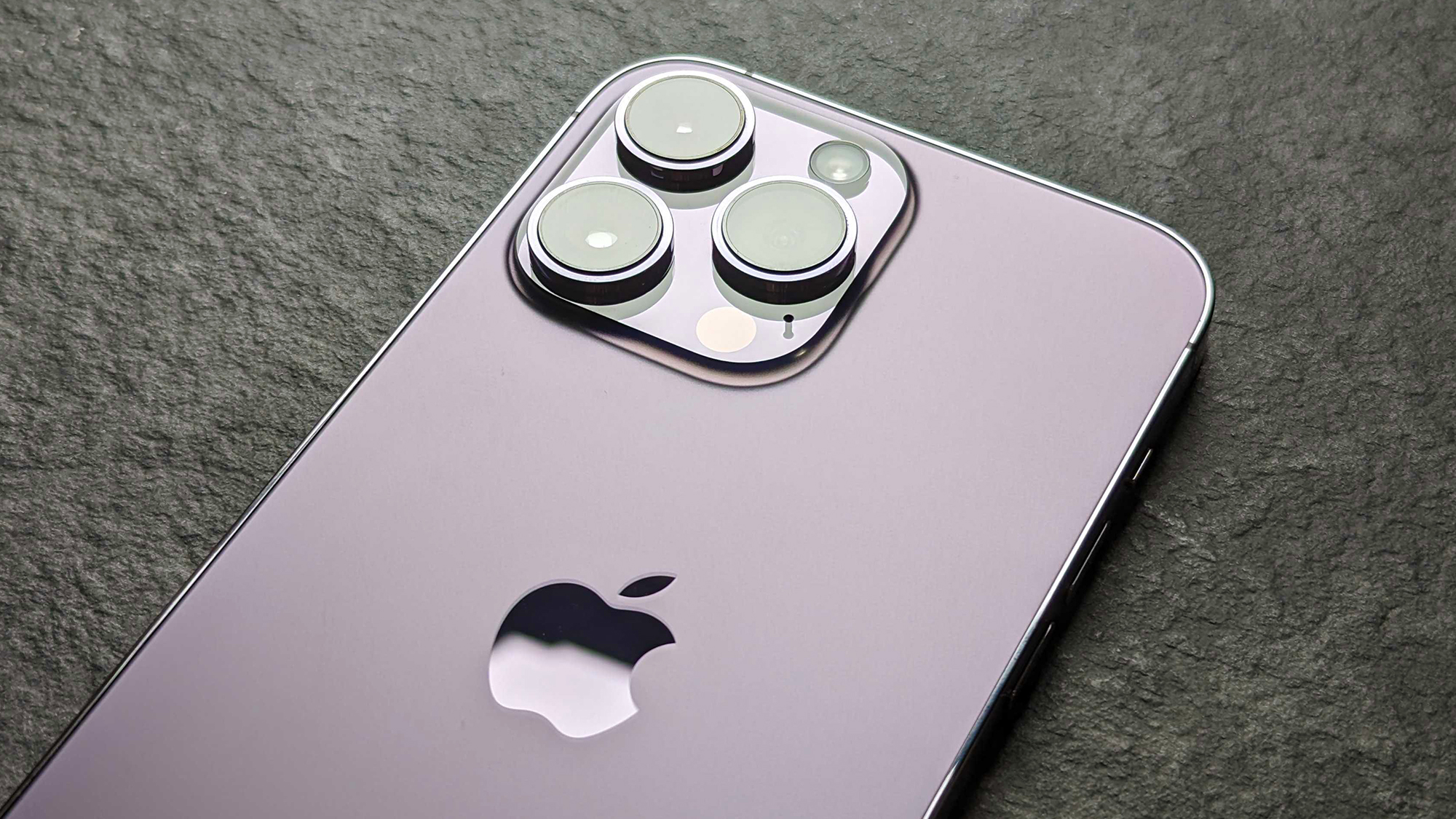
Perhaps more years than most, the iPhone 14 Pro and 14 Pro Max are the smarter buys of this generation of iPhone 14 handsets. Sure, they're pricier but (especially in the US) no more so than expected, and for the extra cash you're getting a significant leap in terms of hardware and functionality. Now the iPhone 15 range is here, you might even find the 14 range availably at a reduced price.
Unlike the 14 and 14 Plus, you get a totally revised camera system – with that impressive-new 48MP lead sensor, the display's skill set has taken a significant step up – which the 14 Pro Max is particularly well-suited to showing off, and the A16 Bionic chipset offers major gains over the A15 Bionic first seen in the 13 Pro line and now powering the non-Pro models of this generation.
There are also the range-wide benefits, all of which the 14 Pro Max enjoys, like Emergency SOS via Satellite and Crash Detection. All in all, price-tag permitting, the iPhone 14 Pro Max is the best of the series to date and a device true iPhone fans can be proud of.

The best big phone out there
If you're comfortable with its size (and price) the iPhone 14 Pro Max is the best you'll get from Apple, right now. That A16 Bionic silicon flies, the new camera is a smart step forward, as is the richer display experience and battery life remains top notch too.
The iPhone 14 Pro Max used in this review was supplied by Vodafone UK. Click here for Vodafone's latest iPhone deals.

Alex is a tech journalist and iMore contributor with over a decade's worth of experience in the role, with an expertise in smartphones, tablets and wearables. Currently TechRadar's Senior Phones Editor, he's covered keynotes hosted by the biggest brands and attended the launches for some of the most influential mobile products of the last few years. His experience was amassed at some of the most reputable consumer technology publications out there, including, GSMArena, TechAdvisor and Trusted Reviews. Alex is currently holding out hope for the Pixel Watch's success and is excited for the advancements coming to the world of foldable phones in the near future.

